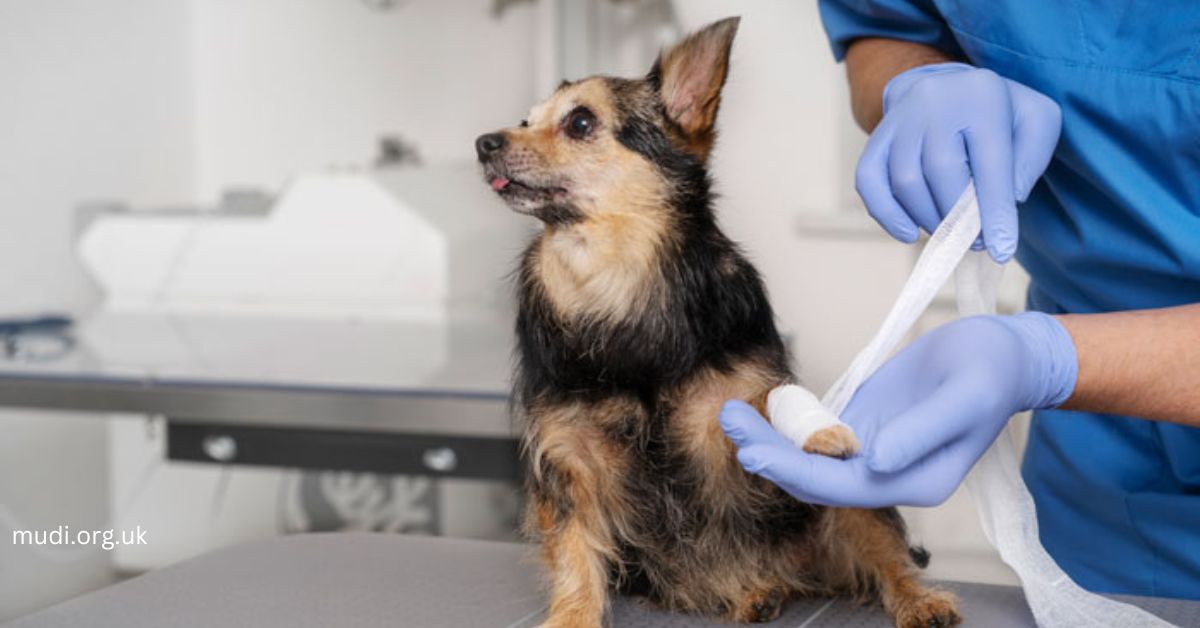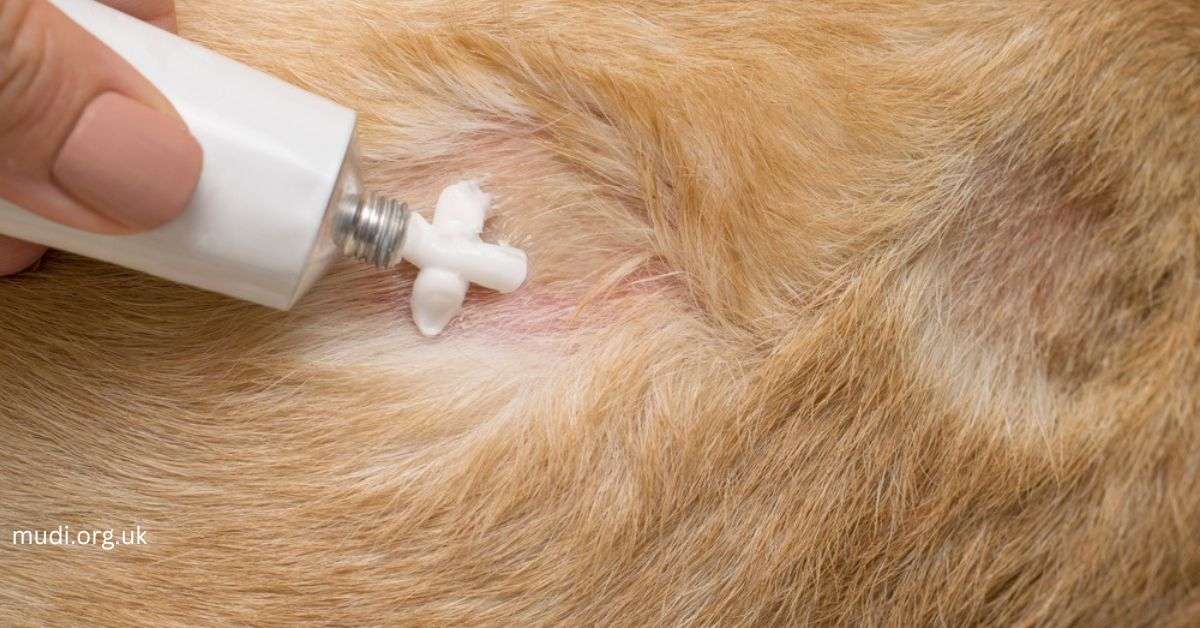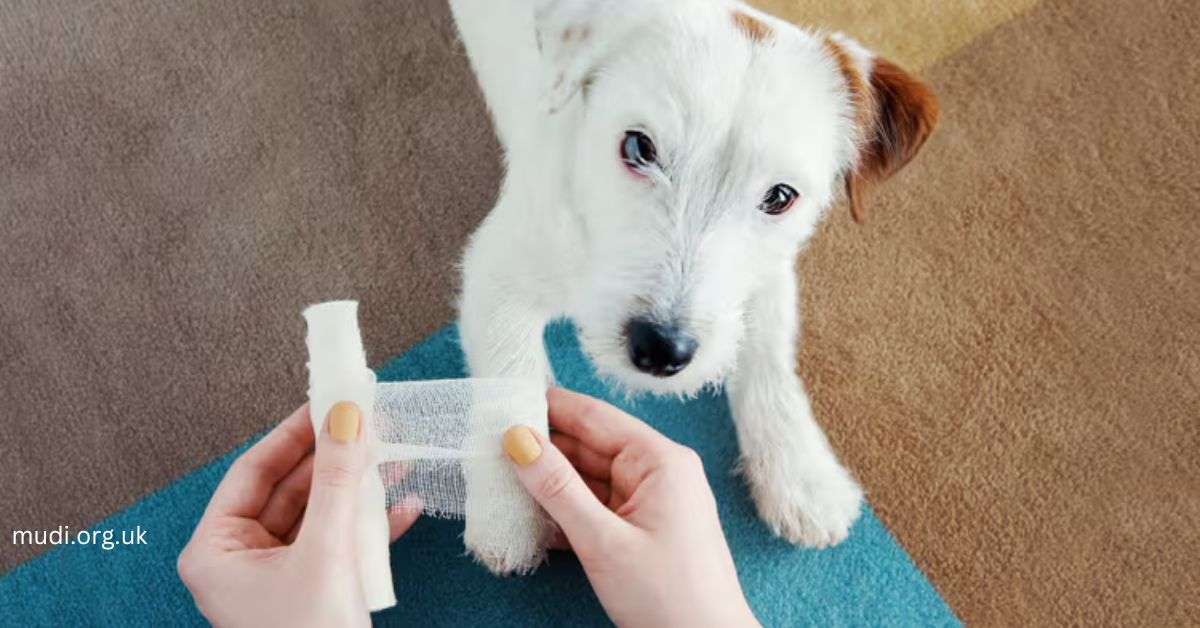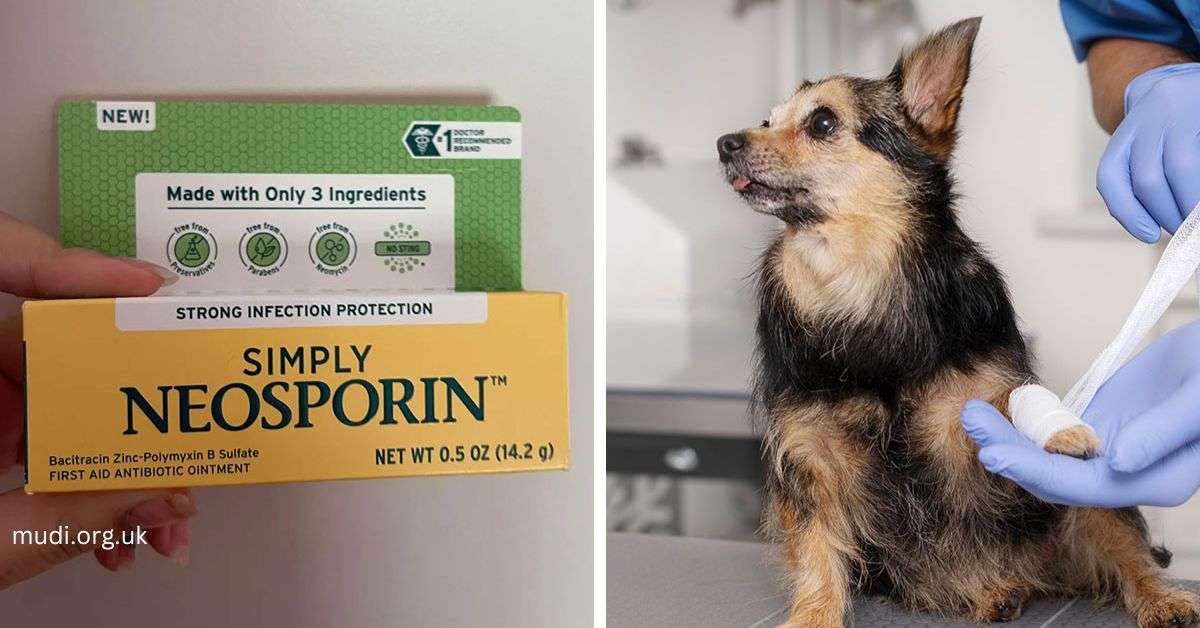Introduction
Used by humans to stop infections in small cuts, scrapes, and burns, Neosporin is a popular over-the-counter antibiotic ointment. However, many pet owners are concerned about whether dogs can be given Neosporin; Neosporin may be beneficial in some circumstances, but it also carries possible hazards. Along with direction on when veterinary care is needed, this paper investigates the advantages, hazards, and options of Neosporin use in dogs.
What is Neosporin?
Neosporin is Regular Expression’s alternative.
With three active compounds, Neosporin is a topical antibiotic.
- An antibiotic called neomycin helps to stop bacterial infections.
- Polymyxin B—Battles with gram-negative bacteria for
- Bacitracin acts against gram-positive bacteria.
Available in several forms—including sprays, creams, and ointments—this is generally used for small injuries. Although it is effective in people, its suitability for dogs varies depending on several issues, among them the wound type and the dog’s propensity to lick the injured region.
Is Neosporin okay for dogs to have?
Neosporin can indeed be used on dogs, but circumspectly. While this might aid in stopping bacterial infections, it is not always the most secure alternative. Neosporin can irritate the stomach or be poisonous, so dogs tend to lick their cuts. Some pets can also have allergic responses to its components, which would complicate things more.
When is Neosporin Safe for Dogs?

Neosporin can be used loquaciously for small quantities.
- Shallow or not-too-serious small cuts or scrapes.
- Superficial injuries free from too much blood loss are cleaned.
- Mildly irritating bites or stings from insects.
- Little scratches from rough play or scratching.
It should really be used under supervision to keep the pet from licking too much. An Elizabethan collar (E-collar) or bandage may be required if your dog keeps trying to lick the treated area.
When should you stay clear of Neosporin on dogs?
If your pet has, stay Neosporin miles apart:
- Flaps or punctures are so deep that they would need expert veterinary attention to stop an infection and guarantee good healing.
- Effective treatment of severe skin infections might call for a prescription antibiotic.
- Some dogs might have allergic responses to Neosporin components, their skin damage, or general symptoms.
- Neosporin should never be used in or around the eyes or ears, as it can cause irritation or damage in cases of ear or eye infections.
- Open sores or burns—For appropriate healing and to avoid problems, specialized care is necessary.
Dangers of Applying Neosporin on Pets
Neosporin is typically safe for humans but may present dangers for pets. These could be some possible problems:
1. Something poisonous consumed
Dogs usually lick their injuries, and consuming Neosporin might cause:
- Throwing Up
- Diarrhea
- Loss of appetite
- Apathy
- Drooling or excessive salivation rises.
Seek veterinary advice at once if your dog ingests a lot to avoid any more problems.
2. Allergy symptoms
Neosporin sensitivity in some dogs can cause symptoms including:
- The site of the application is inflamed and reddened.
- Excessive scratching or licking
- hives or a rash
- in very extreme cases, straining to breathe and needing quick medical intervention.
- Skin blisters and peeling
3.Delayed wound healing is the third cause.
In some situations, petroleum jelly slows drying and lengthens the healing of wounds, something Neosporin has. Particularly in cuts that need air contact to heal correctly, this might raise the likelihood of secondary infections.
4. Antibiotic-resistant
Frequent application of Neosporin could help to improve antibiotic resistance, hence complicating treatments over a lifetime. This is why its application should be restricted and kept for small, non-urgent cuts.
Safely using Neosporin on dogs.

Choose Neosporin and follow these instructions to guarantee secure use:
Clean the Injury—Softly cleanse the site with warm water and gentle soap to clear up dust and trash.
Dry the Zone—Use a clean towel to pat the wound and keep moisture at bay.
Apply a Light Coating: Apply a tiny quantity of Neosporin to the region in question. Don’t use too much since overusing may raise the danger of ingestion.
Keep your dog from licking the injury by using an Elizabethan collar (E-collar) or bandage.
Watch out for reactions; check for any signs of allergic reaction, swelling, or irritation. Discontinue using and see a veterinarian if symptoms arise.
Reapply as Necessary—Only apply Neosporin once or so daily for a brief time. Consult a veterinarian if the wound does not get better within a couple of days.
For dogs, safer options to Neosporin
If using Neosporin worries you, think about these less risky options:
1. Antibiotic ointments for which veterinarians approve
- Mupirocin is a prescription antibiotic ointment for bacterial infections in pets.
- Available with a vet’s prescription, silver sulfadiazine is popular for burns.
- For small skin irritations, hydrocortisone cream (vet-approved) helps to soothe inflammation and itching.
2. Herbal Cures and RESTFULONSEDS.
- Coconut oil has organic anti-inflammatory and antibacterial properties that assist with natural healing.
- Aloe vera reduces irritability and soothes small cuts.
- Manuka honey is a natural antibiotic that helps to speed wound healing and inhibit infections.
- Calendula is an antiseptic, natural treatment that soothes the skin.
- Although it has antimicrobial properties, tea tree oil (diluted) should be applied with great care and appropriate dilution.
3. Antiseptic sprays suitable for pets
- For dogs, chlorhexidine solution is a low-level disinfectant that stops infections.
- Gently on the skin and antibacterial, Betadine (iodine solution) assists in wound cleaning.
- Often employed for small injuries and infections, colloidal silver has antibacterial qualities.
When you should visit a veterinarian

When your animal has:
- Really bad lacerations or punctures that could need sutures or antimicrobials.
- Wound signs of infection include swelling, pus, or a bad smell.
- Bleeding that is very bad and will not stop even after including pressure.
- Fever, loss of appetite, or unusual activity, including weakness, could signal an underlying disease.
- Neosporin allergic reactions include sharp skin irritation or trouble breathing.
- Wounds that get worse pathologically or do not recover within a few days notwithstanding therapy.
Helping dogs to stop cuts and skin abrasions
Stopping injuries is the most effective means of keeping your dog safe and avoiding topical applications like Neosporin. These are some pieces of advice on how to reduce the chances of skin problems and cuts:
- Regular Grooming: Make sure your dog’s coat is trimmed and clean to stop matting, which may result in infections of the skin.
- Clear your backyard and house of sharp objects, poisonous plants, and dangerous substances.
- Supervised play: Monitor your dog during outdoor events to avoid rough terrain or wild animal damage.
- Especially after walks on hard surfaces, regularly check and clean your dog’s paws.
- A balanced diet is good for your skin and helps your resistance against diseases.
Conclusion
So, might Neosporin be applied to dogs? The response is yes, but with care. There is some risk of delayed healing, allergic reactions, and even toxicity even if it might benefit small injuries. Safer choices include veterinary-approved ointments, natural treatments, or antiseptic sprays. Always seek veterinary attention for appropriate treatment if your dog is seriously wounded or demonstrates signs of infection. Keeping your pet’s health a priority helps a quicker and more secure recovery.
Frequently Asked Questions (FAQs)
1.Can I Neosporin my dog’s open wound?
Neosporin will only treat small, surface wounds. Consulting a veterinarian is ideal for open or deep wounds since such wounds may call for medical care, sutures, or antibiotic prescriptions.
2. What occurs should Neosporin get licked by my cat?
Eating a little Neosporin might irritate the stomach somewhat, but larger doses might cause diarrhea, vomiting, or poisons. When you are dressing your dog’s injury with Neosporin, use an E-collar or bandage to avoid licking.
3. Can you find a pet-safe Neosporin substitution?
Sure, there are several safer options for dogs, including Betadine (iodine solution), silver sulfadiazine, Manuka honey or aloe vera natural treatment, and chlorhexidine solution. Before trying any new item, always consult a veterinarian.
5. Will Neosporin help me to treat my legs?
Neosporin may speed the healing of little cuts or abrasions on your dog’s paws. Still, licking their paws can cause dogs to eat food. Coconut oil or a pet-friendly paw balm is a safer selection.
5. For how long ought I to apply Neosporin on my dog?
Use Neosporin once or twice daily for a few days only. Stop using it and find veterinary treatment if the wound does not heal or deteriorates after a few days.

